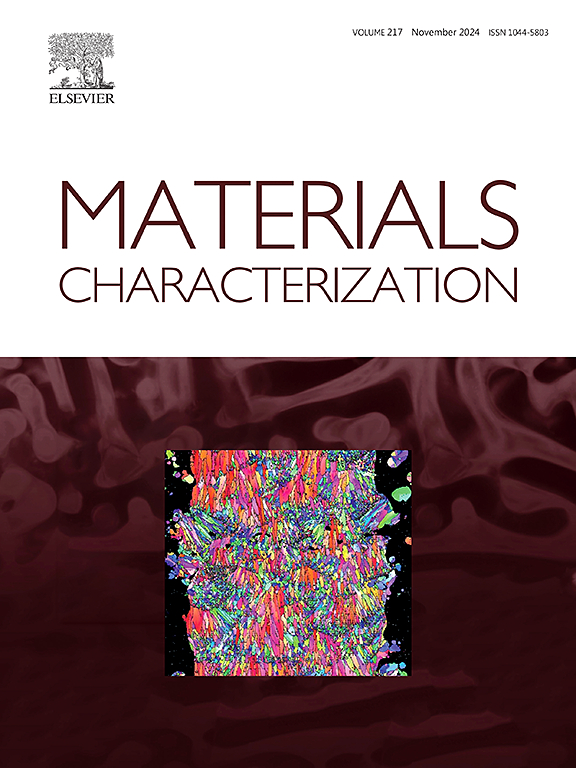Influence of precompression deformation on the residual stress, microstructure, and mechanical properties of aluminum–lithium alloys
IF 4.8
2区 材料科学
Q1 MATERIALS SCIENCE, CHARACTERIZATION & TESTING
引用次数: 0
Abstract
In this study, quenched aluminum–lithium alloy specimens were subjected to precompression deformation (0 %–5 %). Then, the influence of predeformation amounts on the residual stress, microstructure, and mechanical properties of alloy specimens was investigated. Results revealed that the amount of residual stress release first increased and then decreased with increasing predeformation amount. The efficacy of residual stress release was influenced by the initial residual stress in the specimens and their mechanical properties at the surface and core. X-ray diffraction, electron backscatter diffraction, and transmission electron microscopy revealed that due to predeformation, more dislocations were retained in the matrix of the specimen. These dislocations provided nucleation sites for the formation of precipitates. The T1 phase content gradually increased with increasing predeformation amount, whereas the θˊ phase content first increased and then decreased. The contribution of microstructural evolution to the yield strength (YS) of specimens was further analyzed to elucidate the relation between the strengthening mechanism and microstructure. As the predeformation amount increased from 0 % to 2 %, the increase in YS was impacted by an increase in the dislocation density and the continuous precipitation of T1 and θˊ phases. When the predeformation amount was increased to 3 %–5 %, the YS of the specimen increased primarily due to T1 phase precipitation.
求助全文
约1分钟内获得全文
求助全文
来源期刊

Materials Characterization
工程技术-材料科学:表征与测试
CiteScore
7.60
自引率
8.50%
发文量
746
审稿时长
36 days
期刊介绍:
Materials Characterization features original articles and state-of-the-art reviews on theoretical and practical aspects of the structure and behaviour of materials.
The Journal focuses on all characterization techniques, including all forms of microscopy (light, electron, acoustic, etc.,) and analysis (especially microanalysis and surface analytical techniques). Developments in both this wide range of techniques and their application to the quantification of the microstructure of materials are essential facets of the Journal.
The Journal provides the Materials Scientist/Engineer with up-to-date information on many types of materials with an underlying theme of explaining the behavior of materials using novel approaches. Materials covered by the journal include:
Metals & Alloys
Ceramics
Nanomaterials
Biomedical materials
Optical materials
Composites
Natural Materials.
 求助内容:
求助内容: 应助结果提醒方式:
应助结果提醒方式:


